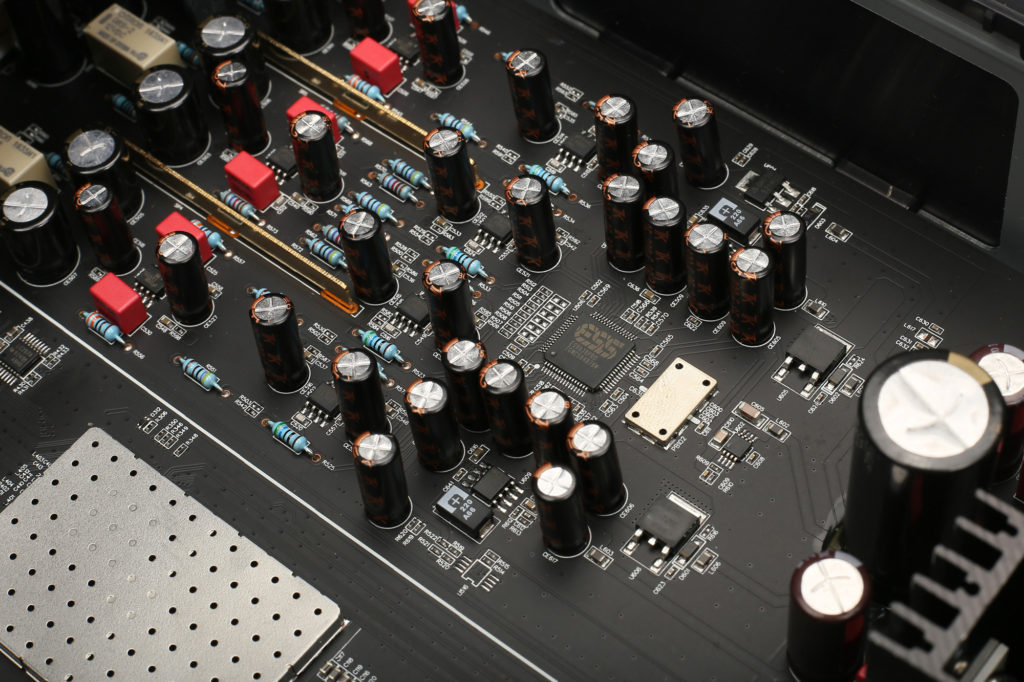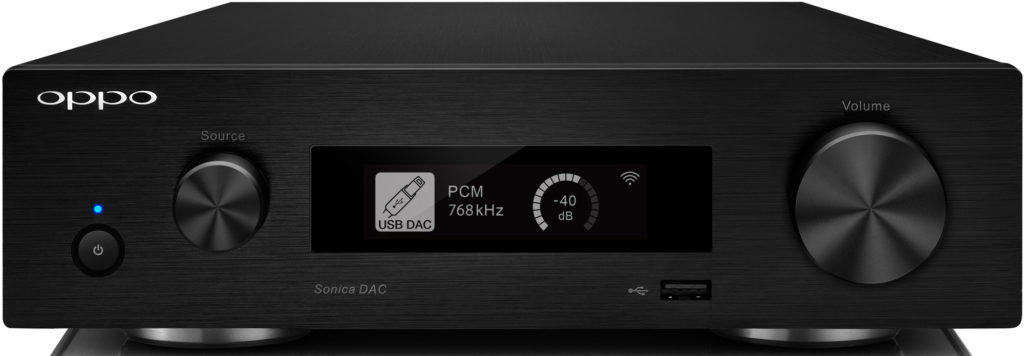Adam LaBarge | Reviewer
The OPPO Sonica DAC is the first OPPO Digital component that I have been able to spend any real time with, which now that I think about it, that is a bit surprising. OPPO Digital has been around since 2004, and if I remember correctly, their initial component offerings into the A/V world caused quite a lot of buzz. But, that may be why I never really took it upon myself to seek out an OPPO product to review. I’m not really into video, and for me, a DAC and digital audio are more of a necessary part of a modern-day music lover’s life than a personal passion.
So, when Jack asked me to give a listen to the OPPO Sonica, equating my youth with digital prowess, I wasn’t so confident in that. Nonetheless, when the Sonica DAC arrived, and I hooked it up to my computer and the Pass Labs HPA-1 that I recently reviewed, I was pleasantly not surprised by the sound. OPPO has a good reputation, their equipment is often compared to much more expensive components, and they are often in systems with much more expensive components at shows. So the great sound I heard from the Sonica was not surprising in the least, though it was very much appreciated.
Over the past two months, I’ve been able to play several different lossless and lossy streaming formats over the Sonica DAC. I have used it in both my headphone system, my living room system, and as a DAC for my TV. With all the ways to connect to the Sonica, and all the digital formats it can process, I’d bet one could write a novel on all the technical gizmos that make it work, butI’m going to focus on the key points that seem most important to me.
Technical Description
The Sonica comes with an ESS ES9038PRO SABRE DAC, which even though the Sonica has been out for a while, is still cutting edge. The other important part, at least to me, is that the Sonica comes with a large toroidal power transformer, which offers less magnetic field interference and is very efficient. This large power supply says even more to me about the thought and quality of the Sonica as a cutting-edge DAC. I’ve heard older DACs that sound great, so it isn’t always the chipset that makes the difference. Lastly, another important aspect of the Sonica is that the DAC’s audio output path is fully balanced from the chipset to the XLR outputs and even the RCA signal is converted from the balanced output. And while there are many engineering benefits to this, the sound really does improve over balanced outputs.

ESS ES9038PRO
The Sonica can be connected directly to your computer via USB and plays FLAC, WAV, Apple Lossless, and basic lossy audio from services such as Netflix and Pandora. One can also connect the Sonica to a DLNA server for DSD64 files or connect via Bluetooth for streaming off your phone or computer. Using the Sonica App via your phone or tablet, it can play sync with Tidal or Spotify. One should note that while the Sonica DAC does work with a lot of file types, it doesn’t work with MQA encoded files.
While this may start to sound like the Sonica is a Swiss Army Knife component, I’d argue that it is actually very focused and purposely designed. While it does have a volume knob, making it a pre-amp as well as a DAC, it isn’t trying to be more than that. No headphone output or no class D amplifiers are smashed in. So the fact that it isn’t really a Swiss army knife is good as the only really useful thing on one of those is the bottle opener. My experience with modern day components is that while they may try to do it all, the actual sound quality ends up being common and boring.
Physically the Sonica DAC measures 10.0 x 3.0 x 14.2 inches and is in the traditional black of an A/V component. The front panel has the power button on the far left side, and next to it is the source controller, which is both a knob for selecting and a button for applying a selection. The center holds the LCD screen which is easy to use thanks for clear input icons and other virtual indicators. Next to this on the right side is the volume knob. Under the LCD panel is a front-facing USB input. Navigating the interface is easy and intuitive. I found pairing the Sonica with my phone and WiFi to be painless, but I did need to follow the instructions for that. If I remember correctly, the setup instructions are part of the iOS or Android app setup process.

Overall I think the size of the DAC allows it to be easily placed for many different uses. For example, I found room for it on my desk, and next to the TV or in the cabinet next to the TV, without much issue.
Listening to the Sonica
What I enjoyed most about the Sonica DAC are its open mid-range and clear upper bass. I found this made it very easy to listen to for hours on end and actually offered some insight into the growl of the bass on some recordings.
Typically I had the DAC powered with a Voodoo Cables Platinum Dragon power cord, M&G Audio or WyWires interconnects, a WyWires USB cable, and the Pass Labs HPA-1 and Audeze LCD-2 headphones with the standard headphone cable. I used the DAC extensively at my desk and listened to it while working. The Sonica offers very clear sound without relying on being overly bright or glaring, pushing the highs for a kind of fake clear sound.
Overall I enjoy the DAC a lot, but I do agree with some other reviewers who have said that it isn’t as punchy or deep as it could be, and while most of the mid-range seems very linear, the very top end highs do sound slightly rolled off. I think these two things combined have even led a reviewer to pronounce that the DAC lacks pacing and emotional engagement. And if I’m honest, I could see how paired with other components that help amplify these traits; the DAC could appear that way. For me, when in the big system and as a source for the Mystere ia11 and PMC TBi2 speakers, I actually appreciated the focus on the mid-range and upper bass. That focus worked perfectly in combination with that equipment. Also, the emotional engagement of the tubes and dynamics of the ia11 added some liveliness to the sound. But when paired with the Pass Labs HPA-1 and the Audeze, there were times I wished the bass and dynamics were a bit more.
So, as Constantine Soo said in his response to a comment on Jack Roberts’ review of the Sonica DAC witten last May for Dagogo, a lot of it just comes down to equipment pairing and what you are looking to hear. You can take a look at that review here.
Conclusion
The last two months have been a very pleasant introduction to OPPO components, and I would recommend the Sonica DAC. While I tend to shy away from one piece of gear that wants to do it all, the Sonica isn’t actually that. While it does have a lot of technology in it, in this case, that doesn’t come at an expense to the actual sound. I have heard the DAC can be converted to use tubes. I wouldn’t mind hearing that. No, I wouldn’t mind at all.

